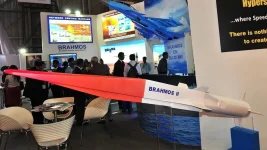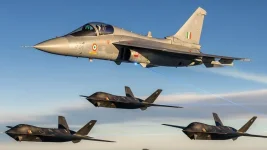In a move to enhance its underwater combat capabilities and maintain seamless communication with its expanding submarine fleet, India is set to inaugurate a new Very Low Frequency (VLF) transmitting station.
Defence Minister Rajnath Singh will inaugurate the strategically crucial facility at Vikarabad, Telangana on October 15th. This development comes amidst growing concerns over China's increasing naval presence in the Indian Ocean Region (IOR).
The new VLF station will provide secure, encrypted communication with submarines operating across India's vast area of interest, even when submerged. VLF radio waves, operating between 3 to 30 Kilohertz, have the unique ability to penetrate seawater, enabling continuous contact with submarines on long-range patrols. This capability is particularly vital for the command and control of nuclear-powered submarines carrying ballistic missiles, which form a critical component of India's nuclear deterrence strategy.
This new facility complements the existing VLF station in Tirunelveli, Tamil Nadu, which has been operational since 1990. The Vikarabad station, equipped with state-of-the-art technology, will ensure uninterrupted communication with both nuclear and diesel-electric submarines 24/7. This enhanced communication network is deemed essential given India's ambitious submarine induction plans.
India recently commissioned its second nuclear-powered ballistic missile submarine (SSBN), INS Arighaat, equipped to carry 3,500-km range K-4 missiles. The first SSBN, INS Arihant, is armed with 750-km range K-15 missiles. A third SSBN, INS Aridhaman, is slated for induction early next year, with a fourth under construction. Future plans include larger 13,500-tonne SSBNs powered by more potent 190 MW reactors.
Furthermore, India is bolstering its attack submarine capabilities. The Cabinet Committee on Security recently approved 'Project-77', a Rs 40,000 crore program to build two nuclear-powered attack submarines (SSNs). These 9,800-tonne vessels, equipped with 190 MW reactors, will be dedicated to conventional warfare and are expected to be operational in 10-12 years.
The Indian Navy is also actively expanding its diesel-electric submarine fleet. The sixth French-origin Scorpene submarine, 'Vagsheer', will be commissioned this December under 'Project-75'. In addition to the existing Kilo-class and HDW submarines, India is finalizing a deal with France for three more Scorpenes.
Looking ahead, 'Project-75-India', a major initiative worth over Rs 42,000 crore, aims to build six advanced diesel-electric submarines with Air-Independent Propulsion (AIP) for extended underwater endurance and land-attack cruise missiles. Germany and Spain are currently vying for this contract.
The expansion of India's submarine fleet and the establishment of the new VLF station underscore India's commitment to strengthening its naval capabilities in the face of growing strategic challenges in the IOR, particularly from China's expanding maritime presence.





